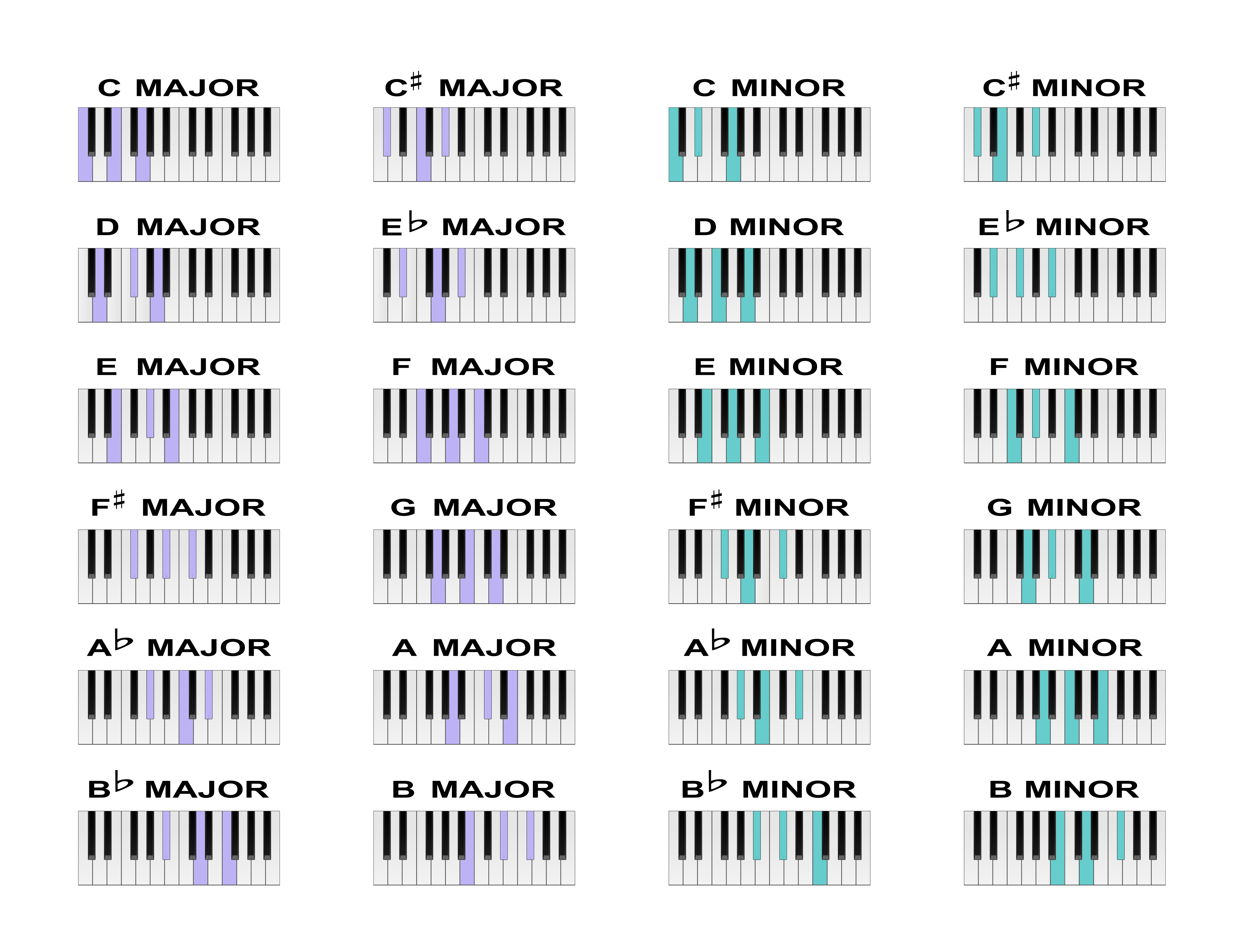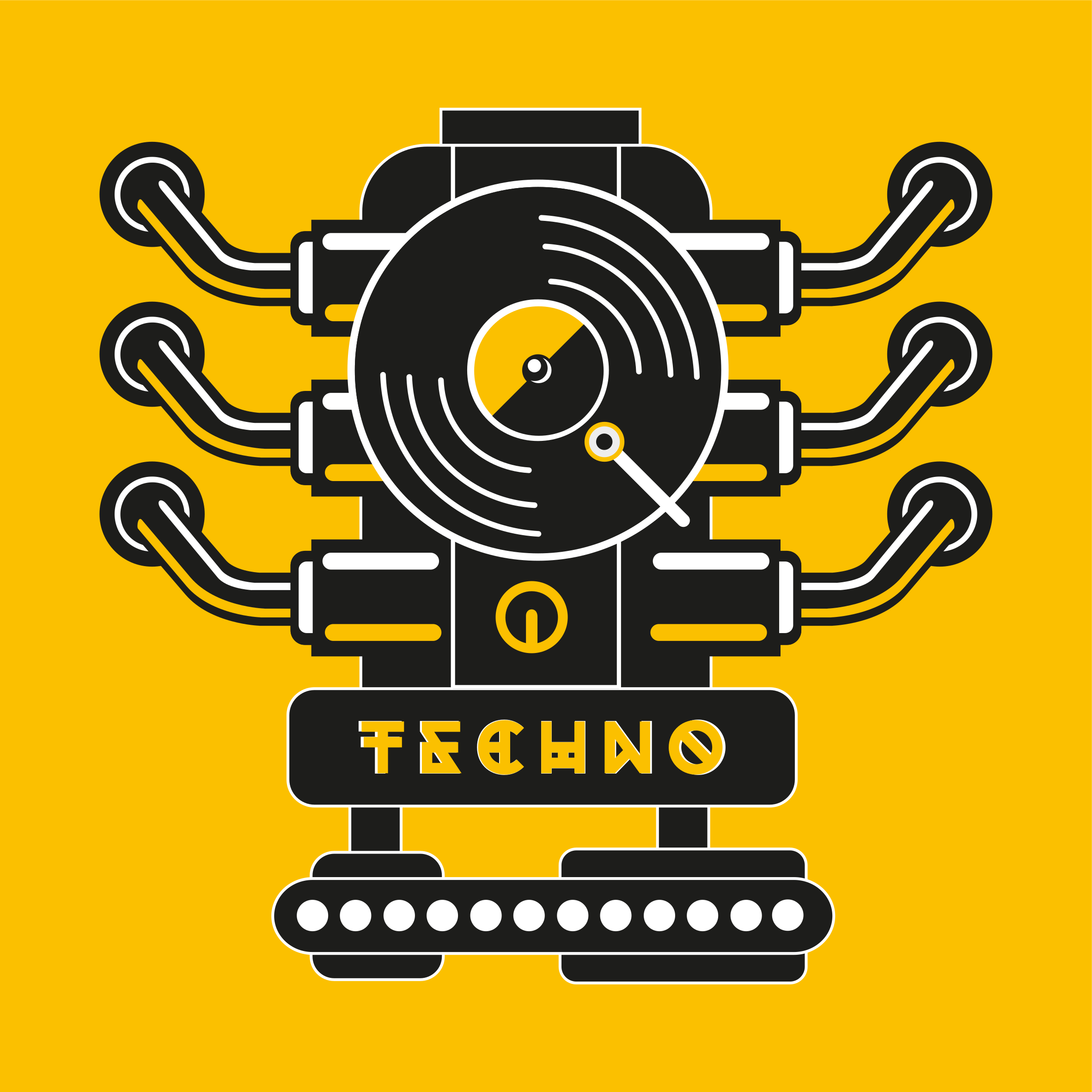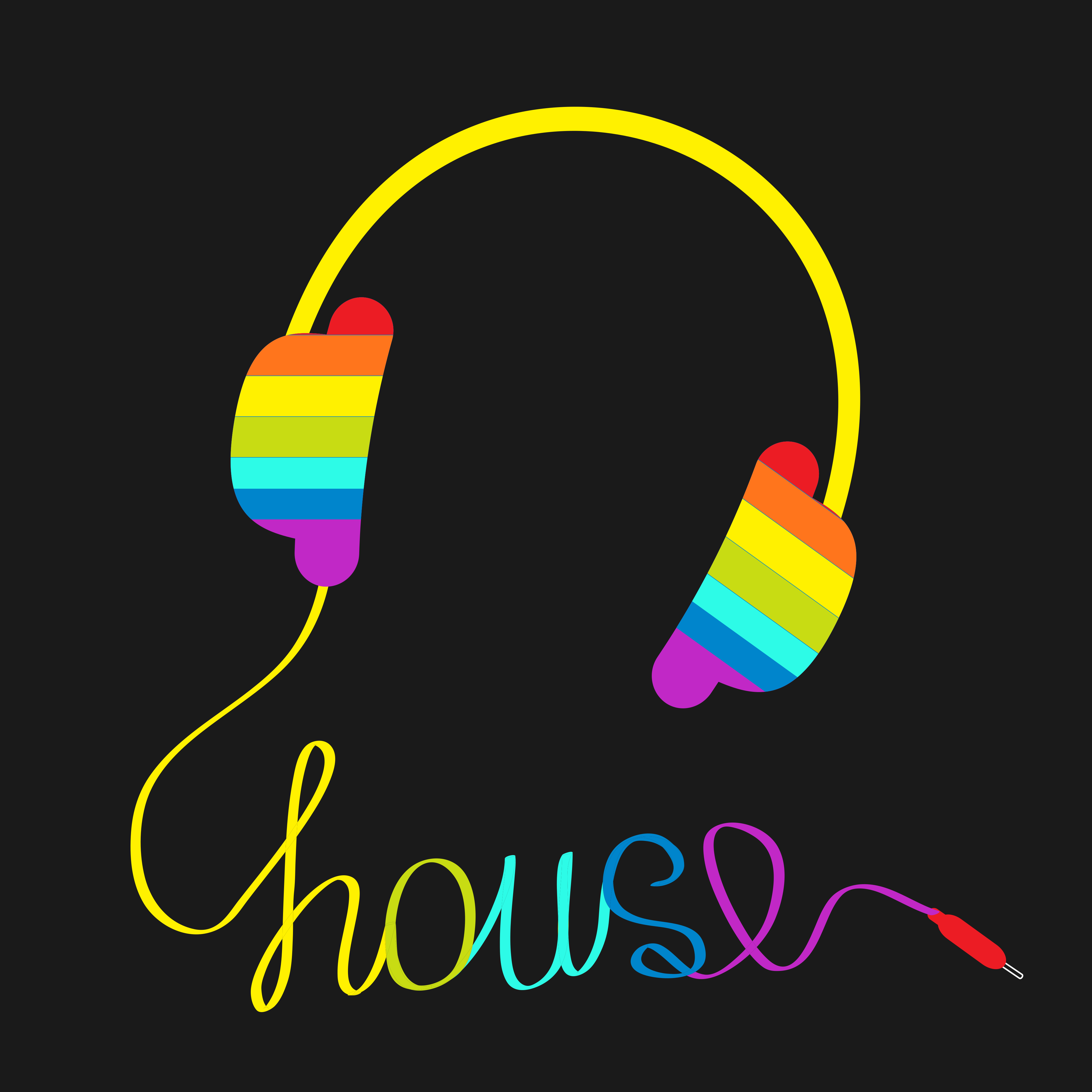Deep house and tech house are two electronic dance music (EDM) genres that may sound similar to some people. However, there are differences between the two genres.
Deep house and tech house songs have a sound emphasis difference. Deep house songs usually emphasize a spacious use of percussion/muted bassline or deep bassline/soft-sounding pads/soulful vocals. Tech house songs usually combine the sound emphasis of the genres techno and house.
This post will explain many (probably not all) similarities and differences between deep house and tech-house. The information in this post comes from online references, and I filtered that information with my knowledge.
The Differences Between Deep House and Tech House
The EDM genres deep house and tech house have similarities and differences, and the table below shows some of these.
This post explains the information in the table below in more detail in the sections under this table.
| deep house | tech house | |
|---|---|---|
| place of origin | Chicago, Illinois, United States | United States (mainly Detroit, Michigan) and Spain (mainly Ibiza) |
| musical origins | house, Chicago house, soul, jazz-funk, New York garage | house, techno, minimal techno, and deep house |
| first song | Mr. Fingers – Mystery of Love | unknown |
| year the first song released | 1985 | unknown |
| some well-known artists | Saison, Fred Everything, and Miguel Migs | Solomun, Claude VonStroke, and Green Velvet |
| common tempos | range: 110—125 BPM | around 125 BPM |
| time signature, rhythm pattern | 4/4, four-on-the-floor | 4/4, four-on-the-floor |
| rhythm emphasis | Usually, deep house songs emphasize every beat with a bass drum hit and emphasize the second and the fourth beat even more. The extra emphasis usually happens with a snare or clap hit on top of the bass drum hit. Also, deep house songs emphasize the off-beat with a hi-hat usually. | Usually, tech house songs emphasize every beat with a bass drum hit and emphasize the second and the fourth beat even more. The extra emphasis usually happens with a snare or clap hit on top of the bass drum hit. Also, tech house songs emphasize the off-beat with a hi-hat usually. |
| typical sounds | A spacious use of percussion / muted bassline or deep bassline / soft-sounding pads / soulful vocals. Deep house songs usually also have advanced chord structures/ambiance / jazzy sound / soulful and lush sound of early disco music / underground sound. | It is a combination of the typical sounds of the genres techno and house. Usually, tech house songs have a techno kick and bassline, from minimal or deep techno music. Also, tech house songs usually have jazzy, soulful house elements and minimal dub elements. |
| length of phrases | The two most common lengths of phrases are 8 bars and 16 bars. However, the same song can also have one or multiple phrases of 4 bars but is less common. | The most common length of phrases is 8 bars. However, the same song can also have one or multiple phrases of 4 bars or 16 bars but are less common. |
| structure | A common deep house song structure has the following parts in this order: intro, breakdown, drop, the main breakdown, drop, outro. | A common tech house song structure has the following parts in this order: intro, drop, breakdown, drop, the main breakdown, drop, outro. |
| average song length | 6:25 minutes | 6:54 minutes |
The Origins of Deep House and Tech House
Deep house music comes from Chicago, Illinois, United States. The musical origins of deep house music are house, Chicago house, soul, jazz-funk, New York garage (source: Deep house).
Tech house comes from the United States (mainly Detroit, Michigan, and Chicago, Illinois) and Spain (mainly Ibiza) The musical origins of tech-house are house, techno, minimal techno, and deep house (source: Tech house).
This website has a blog post about the first deep house song ever, for which I performed much research. According to that blog post, the first deep house song is “Mystery of Love” by Mr. Fingers, released in 1985.
I could not find what the first tech-house song ever is. Tech house started as an approach to DJing before it became a genre, the genre is somewhere between techno and house, and not all played tracks at tech-house parties are tech-house tracks (source: The Tech House Story, Beatport’s Definitive History of Tech House). Therefore, it can make sense that I could not find the first tech-house song.
Some Well-Known Deep House and Tech House Artists
There are multiple DJ lists, such as the “The DJ List Ranking,” and I believe these lists are not always 100% correct, but they can still be useful.
The “Deep House Artists” page of Last.fm and the “Top Deep House Artists of 2020” page of Traxsource have a deep house artists list. We can see the artists Saison, Fred Everything, and Miguel Migs in these lists.
The page “The DJ List Ranking” by The DJ List and the page “The Best Tech House Artists Of 2020” by Ranker both have a tech-house DJ list. We can see the DJs Solomun, Claude VonStroke, and Green Velvet in these lists.
I believe the mentioned DJs/artists are deep-house and tech-house DJs/artists.
Deep House and Tech House Song Characteristics
The subsections below explain similarities and differences between deep house and tech house song characteristics.
Common Tempos of Deep House and Tech House
This website has a blog post about the common tempos of EDM genres, for which I did much research. According to that blog post, deep house songs usually have a tempo within the 110—125 BPM range, and tech house songs usually have a tempo around 125 BPM.
Time Signatures and Rhythm Patterns of Both Genres
Deep house songs have a 4/4 time signature (source: Deep House Music Guide: 4 Characteristics of Deep House).
Tech house songs have a 4/4 time signature (source: How to Talk to Your Kids About Tech House).
Deep house songs have a four-on-the-floor rhythm pattern (source: Deep House Music Guide: 4 Characteristics of Deep House).
Tech house is a subgenre of the house genre. House has a four-on-the-floor rhythm pattern (source: Tech house, House music). Therefore, I believe that tech house songs also have a four-on-the-floor rhythm pattern, and I have only heard four-on-the-floor tech house songs.
The Rhythm Emphasis of Deep House and Tech House
The rhythm emphasis in a house song is on every beat with a bass drum hit and emphasizing the second and the fourth beat even more. The extra emphasis usually happens with a snare or clap hit on top of the bass drum. Also, house songs emphasize the off-beat with a hi-hat usually (source: House music, How do you explain the difference between house music and techno?, House vs Techno vs Trance Music – What are the Differences?).
Deep house is a subgenre of the house genre (source: Deep house). Therefore, deep house songs could have the same rhythm emphasis as house songs.
These pages show that deep house can have a similar rhythm emphasis as the mentioned one of house songs:
- The EDMProd page “The Ultimate Guide to Drum Programming.”
- The Attack Magazine page “Soulful Deep House.”
- The Attack Magazine page “Dusted Deep House.”
- The Attack Magazine page “Deep House – Stripped Workout.”
- The ModeAudio page “Deep House: 5 Production Essentials.”
Deep house songs can also have different rhythm emphasis as the mentioned one in house songs, such as one without extra emphasis on the second and the fourth beat (source: Rolling Deep House).
In tech house songs, the rhythm emphasis is on every beat with a bass drum hit and emphasizing the second and the fourth beat even more. The extra emphasis usually happens with a snare or clap hit on top of the bass drum hit. Also, tech house songs emphasize the off-beat with a hi-hat (source: The Ultimate Guide to Drum Programming, Dirty Tech House, Twisted Tech House, Organic Tech-House, Chugging Tech-House, Naughty Tech-House, Deep Tech House).
Typical Sounds of Deep House and Tech House
Typical sounds of deep house songs are a spacious use of percussion/muted bassline or deep bassline/soft-sounding pads/soulful vocals. These songs usually also have advanced chord structures/ambiance/jazzy sound/soulful and lush sound of early disco music/underground sound (source: Deep house).
Typically in deep house songs (source: Deep house, Deep House: 5 Production Essentials):
- The percussion elements are from a Roland TR-909 drum machine.
- A muted bassline sounds almost as muted. We can make such a bassline sound with a sine waveform or with a different waveform and filter it to the point of almost being a sine waveform.
- The soulful vocals focus on subjects that are positive/uplifting or more melancholic, like blues.
- The jazzy deep house sound comes from gentle organic synthesizer production and instrument sounds.
Here follows an extra explanation in my words of some of the mentioned deep house song sounds:
- The more hits of a particular percussion in a certain amount of time, the more energetic it can feel. Compared to many other genres, deep house songs tend to go for a less energetic feel, which it does with fewer hits of a particular percussion, which is the spacious use of percussion.
- A muted bassline could also be when the bass sound comes from elements such as percussion instead of a dedicated bassline.
- Advanced chord structures are chord structures that are more advanced than those with only three-note chords by which every chord is (usually) one or two bars long.

Deep house chords can have four notes with a 7th note, and they can even have five notes with a 9th note. In deep house chord progressions, we can use chords with different note lengths and rests between chords to make these progressions more interesting. A common length for such a progression is probably 4 bars (source: Deep House Chords, How to create deep house minor ninth chords, 6 Deep House Chord Progression Tips For Beginners).
There are many deep house songs with sampled chords. A sampled chord is an audio file of a chord sound that we can play with one note using a sampler. When the sampler plays different notes, the sampled chord plays different notes, which happens with pitch-shifting.
The further away the sampler plays the sampled chord from its original pitch (the pitch at which we sampled it), the more obvious the pitch-shifted sound can become. Also, playing a sampled chord at a pitch different from its original pitch can result in playing notes outside the scale (source: Sampled Chords, 6 Deep House Chord Progression Tips For Beginners).
The typical tech house sound combines the typical sounds of the genres techno and house. Usually, tech house songs have a techno kick and bassline, from minimal or deep techno music. Also, tech house songs usually have jazzy, soulful house elements and minimal dub elements.

Tech house has some overlap with progressive house, which can also have soulful, deep, and dub elements, and have elements from techno songs, especially after the year 2000, as progressive house songs became deeper and sometimes more minimal. For example, tech-house songs can have grooves and harmonies of progressive house songs. Tech house songs typically have less energy than progressive house songs.

Tech house can have a clean and minimal style, which it originally had, like the techno from Detroit and the UK.
Tech house songs have similar elements as house songs. However, the house ‘sound’ elements, such as booming kicks and deep house jazz sounds, are replaced with techno elements. These techno sounds could be shorter, darker, deeper, and usually distorted kicks, noisier snares, smaller, quicker hi-hats, more synthetic or acid-sounding melodies from the Roland TB-303, including raw electronic noises from distorted square wave and sawtooth oscillators.
Some producers, such as David Chambers, add soulful elements, such as vocals, and add equally as many raw electronic sounds (source: Tech house).
The Length of Phrases in Deep House and Tech House Songs
The most common lengths of phrases for deep house songs are 8 bars and 16 bars (source: 10 Deep House Songs Analyzed by Structure, Deep House: 5 Production Essentials). However, I think that the same song can also have one or multiple phrases of 4 bars, but it is less common. The deep house genre is a subgenre of the house genre, and 4 bar phrases can be part of a house song (source: House music, How To Make House Music: The Complete Guide).
A tech-house song’s common length of phrases is 4, 8, and 16 bars (source: PLP 081: How to Make a Tech House Track). However, I believe the most common phrase length is 8 bars since 8 bar phrases are common in house songs, and tech house is a subgenre of house (source: House music).
The Structure of Deep House and Tech House Songs
EDMProd analyzed the songs in the Beatport top 100. According to the analysis, in October 2015, EDMProd shared the most found song structures.
EDMProd described each of these song structures with a sequence of letters. Each of these letters is a section type of a song structure. The section types of these letters are:
- A: verse, breakdown, build-up, or alternative section
- B: chorus or drop
- C: bridge, main breakdown, or musically different section
According to the analysis, the most common deep house song structure is ABCB, and the most common tech house song structure is BABCB (source: What I Learned from Analyzing the Top 100 Tracks on Beatport).
I believe (from experience) that the meaning of the mentioned section-type letters for the song structures can be simpler. The simpler meaning of the section type letters could be:
- A: breakdown
- B: drop
- C: main breakdown (the longest breakdown)
To give the structures more detail, I think the breakdowns in these song structures usually end with a build-up. I also believe that the mentioned song structures by EDMProd are the most common ones, not only of the analyzed songs.
As also explained by EDMProd, there can be two versions of a house song, the ‘original mix’ and the ‘radio-friendly’ one. The radio-friendly one can be the same structure as the already mentioned structure of the Beatport top 100 in October 2015. The original mix version can be the same as the radio-friendly one, but with an added intro before and an added outro after the radio-friendly structure (source: How To Make House Music: The Complete Guide).
As far as I know:
- People sometimes name the original mix version as the ‘extended mix’ version.
- The difference between the extended mix version and the not extended mix version can be more different than the extra intro and outro.
An example with a deep house song is “Lauren” by Oden & Fatzo, which does have an extended mix and a not extended mix, and you can listen to both versions below in this post. This song is part of the deep house genre (source: Lauren (I Can’t Stay Forever) Extended).
An example with a tech-house song is “Disconnected” by Tita Lau and James Hype, which also has an extended mix and a not extended mix, and you can listen to both versions below in this post. This song is part of the tech-house genre (source: Disconnected Extended Mix).
The Song Lengths of Deep House and Tech House
As already mentioned, the song length can depend on the version of that song, such as that the ‘original mix’ or ‘extended mix’ is (probably always) longer than the ‘radio edit’ one.
EDMProd analyzed the Beatport top 100 in October 2015 and found the average song length of multiple genres (source: What I Learned from Analyzing the Top 100 Tracks on Beatport).
The average deep house song length is 6:25 minutes, according to the analysis by EDMProd. Some people believe that the length of a deep house song is usually between 7 and 10 minutes (source: Top 10 Best Deep House Songs, What characterizes deep house music?). I think that the average deep house song length is about 6:25 minutes.
The average tech house song length is 6:54 minutes, according to the analysis by EDMProd.
Deep House and Tech House Song Examples
This section has some deep house and tech-house song examples.
The extended mix of the deep house song “Lauren” by Oden & Fatzo
Here is the official video version for the deep house song “Lauren” by Oden & Fatzo. This version has a few moments with a few seconds of video sounds.
The extended mix of the tech-house song “Disconnected” by James Hype & Tita Lau
The not extended mix of the tech-house song “Disconnected” by James Hype & Tita Lau
Closing Words
Hopefully, you have learned something from the explained similarities and differences between the two EDM genres, deep house and tech-house.
If you want to read more about the deep house genre, this blog has a comprehensive overview of the deep house genre. Also, if you like this post, look at other posts on this website since you might also like them.
You can share this post when you know someone who likes to learn more about the similarities and differences between the two EDM genres, deep house and tech-house.

